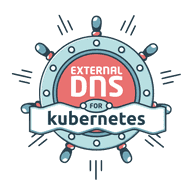Community-created Operators
Take a few moments to learn what these operators can do for your systems deployed on OpenShift.
![]() Aerospike Operator The Aerospike Operator manages Aerospike clusters atop Kubernetes, automating their creation and administration.Source
Aerospike Operator The Aerospike Operator manages Aerospike clusters atop Kubernetes, automating their creation and administration.Source![]() Apache Spark — GCP Kubernetes operator for specifying and managing the lifecycle of Apache Spark applications on Kubernetes.Source
Apache Spark — GCP Kubernetes operator for specifying and managing the lifecycle of Apache Spark applications on Kubernetes.Source![]() Apache Spark — Radanalytics.io ConfigMap and CRD operator for managing the Spark clusters in Kubernetes and OpenShift.Source
Apache Spark — Radanalytics.io ConfigMap and CRD operator for managing the Spark clusters in Kubernetes and OpenShift.Source![]() AWS Controllers for Kubernetes (ACK) AWS Controllers for Kubernetes (ACK) lets you define and use AWS service resources directly from Kubernetes. With ACK, you can take advantage of AWS managed services for your Kubernetes applications without needing to define resources outside of the cluster or run services that provide supporting capabilities like databases or message queues within the cluster.Source
AWS Controllers for Kubernetes (ACK) AWS Controllers for Kubernetes (ACK) lets you define and use AWS service resources directly from Kubernetes. With ACK, you can take advantage of AWS managed services for your Kubernetes applications without needing to define resources outside of the cluster or run services that provide supporting capabilities like databases or message queues within the cluster.Source![]() Black Duck OpsSight Connector The Black Duck OpsSight Connector provides software composition analysis of open-source components of containers in OpenShift v3.x and Kubernetes clusters.Source
Black Duck OpsSight Connector The Black Duck OpsSight Connector provides software composition analysis of open-source components of containers in OpenShift v3.x and Kubernetes clusters.Source![]() Black Duck Synopsys Admin Synopsys Operator is a cloud-native administration utility for Synopsys software. The Synopsys Operator assists in the deployment and management of Synopsys software in cloud-native environments (i.e., Kubernetes and OpenShift).Source
Black Duck Synopsys Admin Synopsys Operator is a cloud-native administration utility for Synopsys software. The Synopsys Operator assists in the deployment and management of Synopsys software in cloud-native environments (i.e., Kubernetes and OpenShift).Source![]() Camel-K Apache Camel K (a.k.a. Kamel) is a lightweight integration framework built from Apache Camel that runs natively on Kubernetes and is specifically designed for serverless and microservice architectures.Source
Camel-K Apache Camel K (a.k.a. Kamel) is a lightweight integration framework built from Apache Camel that runs natively on Kubernetes and is specifically designed for serverless and microservice architectures.Source![]() Cassandra — Pantheon Operator for managing Cassandra clustersSource
Cassandra — Pantheon Operator for managing Cassandra clustersSource![]() Chainer Operator For Chainer/ChainerMN jobs currently only serves as a proof of concept for running distributed training with Chainer/ChainerMN on Kubernetes.Source
Chainer Operator For Chainer/ChainerMN jobs currently only serves as a proof of concept for running distributed training with Chainer/ChainerMN on Kubernetes.Source![]() Confluent Apache Kafka Confluent Operator automates provisioning, management and operations of the entire Confluent Platform using the Kubernetes Operator API.Source
Confluent Apache Kafka Confluent Operator automates provisioning, management and operations of the entire Confluent Platform using the Kubernetes Operator API.Source![]() Couchbase Autonomous The Couchbase Autonomous Operator for Kubernetes enables cloud portability and automates operational best practices for deploying and managing the Couchbase Data Platform.Source
Couchbase Autonomous The Couchbase Autonomous Operator for Kubernetes enables cloud portability and automates operational best practices for deploying and managing the Couchbase Data Platform.Source![]() Crunchy PostgreSQL The CrunchyData Postgres Operator is a controller that runs within a Kubernetes cluster that provides a means to deploy and manage PostgreSQL clusters.Source
Crunchy PostgreSQL The CrunchyData Postgres Operator is a controller that runs within a Kubernetes cluster that provides a means to deploy and manage PostgreSQL clusters.Source![]() Dask (alpha) Vitess Operator provides automation that simplifies the administration of Vitess clusters on Kubernetes.Source
Dask (alpha) Vitess Operator provides automation that simplifies the administration of Vitess clusters on Kubernetes.Source![]() Dex SSO — Jenkins-x Single Sign-On Kubernetes operator for dex, which can provision, expose and manage a SSO proxy for a Kubernetes service.Source
Dex SSO — Jenkins-x Single Sign-On Kubernetes operator for dex, which can provision, expose and manage a SSO proxy for a Kubernetes service.Source![]() Dynatrace OneAgent The Dynatrace OneAgent Operator which supports the rollout and lifecycle of Dynatrace OneAgent in Kubernetes and OpenShift clusters. Rolling out Dynatrace OneAgent via DaemonSet on a cluster is straightforward. Maintaining its lifecycle places a burden on the operational team. Dynatrace OneAgent Operator closes this gap by automating the repetitive steps involved in keeping Dynatrace OneAgent at its latest desired version.Source
Dynatrace OneAgent The Dynatrace OneAgent Operator which supports the rollout and lifecycle of Dynatrace OneAgent in Kubernetes and OpenShift clusters. Rolling out Dynatrace OneAgent via DaemonSet on a cluster is straightforward. Maintaining its lifecycle places a burden on the operational team. Dynatrace OneAgent Operator closes this gap by automating the repetitive steps involved in keeping Dynatrace OneAgent at its latest desired version.Source![]() Eclipse Che/Codeready Che Operator creates Eclipse Che k8s and OpenShift resources such as pvcs, services, deployments, routes, ingresses etc.Source
Eclipse Che/Codeready Che Operator creates Eclipse Che k8s and OpenShift resources such as pvcs, services, deployments, routes, ingresses etc.Source![]() ElasticSearch — UPMC Enterprise The ElasticSearch operator is designed to manage one or more elastic search clusters. Included in the project (initially) is the ability to create the Elastic cluster, deploy the data nodes across zones in your Kubernetes cluster, and snapshot indexes to AWS S3.Source
ElasticSearch — UPMC Enterprise The ElasticSearch operator is designed to manage one or more elastic search clusters. Included in the project (initially) is the ability to create the Elastic cluster, deploy the data nodes across zones in your Kubernetes cluster, and snapshot indexes to AWS S3.Source![]() Envoy Envoy Operator creates/configures/manages Envoy clusters atop KubernetesSource
Envoy Envoy Operator creates/configures/manages Envoy clusters atop KubernetesSource![]() etcd The etcd operator creates, configures, and manages etcd clusters on Kubernetes. Automatically scales and backs up your dataSource
etcd The etcd operator creates, configures, and manages etcd clusters on Kubernetes. Automatically scales and backs up your dataSource![]() External DNS Configure external DNS servers (AWS Route53, Google CloudDNS and others) for Kubernetes Ingresses and ServicesSource
External DNS Configure external DNS servers (AWS Route53, Google CloudDNS and others) for Kubernetes Ingresses and ServicesSource![]() Falco Kubernetes operator for Sysdig Falco.Source
Falco Kubernetes operator for Sysdig Falco.Source![]() Gitea An Operator that installs Gitea. Installation is performed by creating a custom resource of kind Gitea. You can uninstall Gitea by removing this resource. The Operator will also watch all Gitea resources and reinstall them if they are deleted.Source
Gitea An Operator that installs Gitea. Installation is performed by creating a custom resource of kind Gitea. You can uninstall Gitea by removing this resource. The Operator will also watch all Gitea resources and reinstall them if they are deleted.Source![]() Habitat Operator (alpa) The Habitat operator is a Kubernetes controller designed to solve running and auto-managing Habitat Services on Kubernetes. It does this by making use of Custom Resource Definitions.Source
Habitat Operator (alpa) The Habitat operator is a Kubernetes controller designed to solve running and auto-managing Habitat Services on Kubernetes. It does this by making use of Custom Resource Definitions.Source![]() InfluxDB The Kubernetes operator to manage InfluxDB and the TICK Stack.Source
InfluxDB The Kubernetes operator to manage InfluxDB and the TICK Stack.Source![]() InfraBox — SAP InfraBox is a continuous integration system.Source
InfraBox — SAP InfraBox is a continuous integration system.Source![]() Jaeger Jaeger Operator for Kubernetes. Jaeger is a distributed tracing system. It can be used for monitoring microservices-based distributed systemsSource
Jaeger Jaeger Operator for Kubernetes. Jaeger is a distributed tracing system. It can be used for monitoring microservices-based distributed systemsSource![]() JetStack Cert Manager Automatically provision and manage TLS certificates in KubernetesSource
JetStack Cert Manager Automatically provision and manage TLS certificates in KubernetesSource![]() KeyCloak A Kubernetes Operator based on the Operator SDK for syncing resources in Keycloak.Source
KeyCloak A Kubernetes Operator based on the Operator SDK for syncing resources in Keycloak.Source![]() Kie Cloud Operator OCP Operator for KIE Group the Drools rule engine, OptaPlanner constraint solver and jBPM workflow engine.Source
Kie Cloud Operator OCP Operator for KIE Group the Drools rule engine, OptaPlanner constraint solver and jBPM workflow engine.Source![]() Kubernetes Federation Kubernetes Federation is a tool to sync (aka federate) a set of Kubernetes objects from a source into a set of other clusters. Common use-cases include federating Namespaces across all of your clusters or rolling out an application across several geographically distributed clusters.Source
Kubernetes Federation Kubernetes Federation is a tool to sync (aka federate) a set of Kubernetes objects from a source into a set of other clusters. Common use-cases include federating Namespaces across all of your clusters or rolling out an application across several geographically distributed clusters.Source![]() Kubernetes Pod Restarter — Rebuy Operator that deletes targeted Kubernetes Pods to force a regular restart.Source
Kubernetes Pod Restarter — Rebuy Operator that deletes targeted Kubernetes Pods to force a regular restart.Source![]() Kubevirt Web UI The kubernetes operator for managing Kubevirt Web UI deployment. Leverages the operator-sdk.Source
Kubevirt Web UI The kubernetes operator for managing Kubevirt Web UI deployment. Leverages the operator-sdk.Source![]() M3DB The M3DB Operator is a project dedicated to setting up M3DB on Kubernetes. It aims to automate everyday tasks around managing M3DB.Source
M3DB The M3DB Operator is a project dedicated to setting up M3DB on Kubernetes. It aims to automate everyday tasks around managing M3DB.Source![]() MongoDB Enterprise The MongoDB Enterprise Kubernetes Operator enables easy deploys of MongoDB into Kubernetes clusters, using our management, monitoring and backup platforms, Ops Manager and Cloud Manager. By installing this integration, you will be able to deploy MongoDB instances with a single simple command.Source
MongoDB Enterprise The MongoDB Enterprise Kubernetes Operator enables easy deploys of MongoDB into Kubernetes clusters, using our management, monitoring and backup platforms, Ops Manager and Cloud Manager. By installing this integration, you will be able to deploy MongoDB instances with a single simple command.Source![]() MPI The MPI Operator makes it easy to run allreduce-style distributed training.Source
MPI The MPI Operator makes it easy to run allreduce-style distributed training.Source![]() Multicluster-Controller Operator Multicluster-controller is a Go library for building Kubernetes controllers that need to watch resources in multiple clusters. It uses the best parts of controller-runtime (the library powering kubebuilder and now operator-sdk) and replaces its API (the manager, controller, reconcile, and handler packages) to support multicluster operations.Source
Multicluster-Controller Operator Multicluster-controller is a Go library for building Kubernetes controllers that need to watch resources in multiple clusters. It uses the best parts of controller-runtime (the library powering kubebuilder and now operator-sdk) and replaces its API (the manager, controller, reconcile, and handler packages) to support multicluster operations.Source![]() MXnet An Operator for Apache MXNet jobsSource
MXnet An Operator for Apache MXNet jobsSource![]() NATS This operator manages NATS clusters atop Kubernetes, automating their creation and administration.Source
NATS This operator manages NATS clusters atop Kubernetes, automating their creation and administration.Source![]() Percona Server for MongoDB (alpha) A Kubernetes operator for Percona Server for MongoDBSource
Percona Server for MongoDB (alpha) A Kubernetes operator for Percona Server for MongoDBSource![]() Percona XtraDB Cluster (alpha) A Kubernetes operator for Percona Percona XtraDB ClustersSource
Percona XtraDB Cluster (alpha) A Kubernetes operator for Percona Percona XtraDB ClustersSource![]() Pravega (alpha) Pravega is an open source distributed storage service implementing Streams.Source
Pravega (alpha) Pravega is an open source distributed storage service implementing Streams.Source![]() Prometheus The Prometheus operator creates/configures/manages Prometheus clusters atop KubernetesSource
Prometheus The Prometheus operator creates/configures/manages Prometheus clusters atop KubernetesSource![]() Pytorch Operator for PyTorch jobsSource
Pytorch Operator for PyTorch jobsSource![]() Redis The Redis Enterprise Operator is the fastest, most efficient way to deploy and maintain a Redis Enterprise Cluster in Kubernetes.Source
Redis The Redis Enterprise Operator is the fastest, most efficient way to deploy and maintain a Redis Enterprise Cluster in Kubernetes.Source![]() Rook Rook is an open source cloud-native storage orchestrator for Kubernetes, providing the platform, framework, and support for a diverse set of storage solutions to natively integrate with cloud-native environments.Source
Rook Rook is an open source cloud-native storage orchestrator for Kubernetes, providing the platform, framework, and support for a diverse set of storage solutions to natively integrate with cloud-native environments.Source![]() StorageOS Cluster Operator The StorageOS Cluster Operator deploys and configures a StorageOS cluster on Kubernetes.Source
StorageOS Cluster Operator The StorageOS Cluster Operator deploys and configures a StorageOS cluster on Kubernetes.Source![]() Stork — Libopenstorage — Portworx Stork is a Cloud Native storage orchestration runtime scheduler plugin. It translates a scheduler's orchestration decisions into someting that an external cloud native storage solution can act upon. By doing so, it extends Kubernetes with more stateful awareness of the underlying storage provider, it's capabilities and state.Source
Stork — Libopenstorage — Portworx Stork is a Cloud Native storage orchestration runtime scheduler plugin. It translates a scheduler's orchestration decisions into someting that an external cloud native storage solution can act upon. By doing so, it extends Kubernetes with more stateful awareness of the underlying storage provider, it's capabilities and state.Source![]() Strimzi Kafka Strimzi provides a way to run an Apache Kafka cluster on Kubernetes or OpenShift in various deployment configurations.Source
Strimzi Kafka Strimzi provides a way to run an Apache Kafka cluster on Kubernetes or OpenShift in various deployment configurations.Source![]() Syndesis The Syndesis Infrastructure Operator for installing and updating Syndesis.Source
Syndesis The Syndesis Infrastructure Operator for installing and updating Syndesis.Source![]() Tensorflow Operator For TensorFlow jobsSource
Tensorflow Operator For TensorFlow jobsSource![]() Tidb — PingCAP TiDB operator creates and manages TiDB clusters running in Kubernetes.Source
Tidb — PingCAP TiDB operator creates and manages TiDB clusters running in Kubernetes.Source![]() UPMC ElasticSearch The ElasticSearch operator is designed to manage one or more elastic search clusters. Included in the project (initially) is the ability to create the Elastic cluster, deploy the data nodes across zones in your Kubernetes cluster, and snapshot indexes to AWS S3.Source
UPMC ElasticSearch The ElasticSearch operator is designed to manage one or more elastic search clusters. Included in the project (initially) is the ability to create the Elastic cluster, deploy the data nodes across zones in your Kubernetes cluster, and snapshot indexes to AWS S3.Source![]() Vault The Vault operator deploys and manages Vault clusters on Kubernetes. Vault instances created by the Vault operator are highly available and support automatic failover and upgrade.Source
Vault The Vault operator deploys and manages Vault clusters on Kubernetes. Vault instances created by the Vault operator are highly available and support automatic failover and upgrade.Source![]() Vitess Vitess Operator provides automation that simplifies the administration of Vitess clusters on Kubernetes.Source
Vitess Vitess Operator provides automation that simplifies the administration of Vitess clusters on Kubernetes.Source![]() Vitess — PlanetScale The Vitess Operator provides automation that simplifies the administration of Vitess clusters on Kubernetes.Source
Vitess — PlanetScale The Vitess Operator provides automation that simplifies the administration of Vitess clusters on Kubernetes.Source![]() VPC Peering The VPC Peering operator for Kubernetes provides a way to natively define a vpc peering as a Kubernetes object and handles the lifecycle around the Peering and Routing for a VPC.Source
VPC Peering The VPC Peering operator for Kubernetes provides a way to natively define a vpc peering as a Kubernetes object and handles the lifecycle around the Peering and Routing for a VPC.Source![]() Xoe Labs Odoo Odoo Operator (alpha) using Red Hat's operator-framework to run Odoo Instances professionally at scale.Source
Xoe Labs Odoo Odoo Operator (alpha) using Red Hat's operator-framework to run Odoo Instances professionally at scale.Source![]() Zookeeper — Pravega ZooKeeper is a centralized service for maintaining configuration information, naming, providing distributed synchronization, and providing group services.Source
Zookeeper — Pravega ZooKeeper is a centralized service for maintaining configuration information, naming, providing distributed synchronization, and providing group services.Source






















































